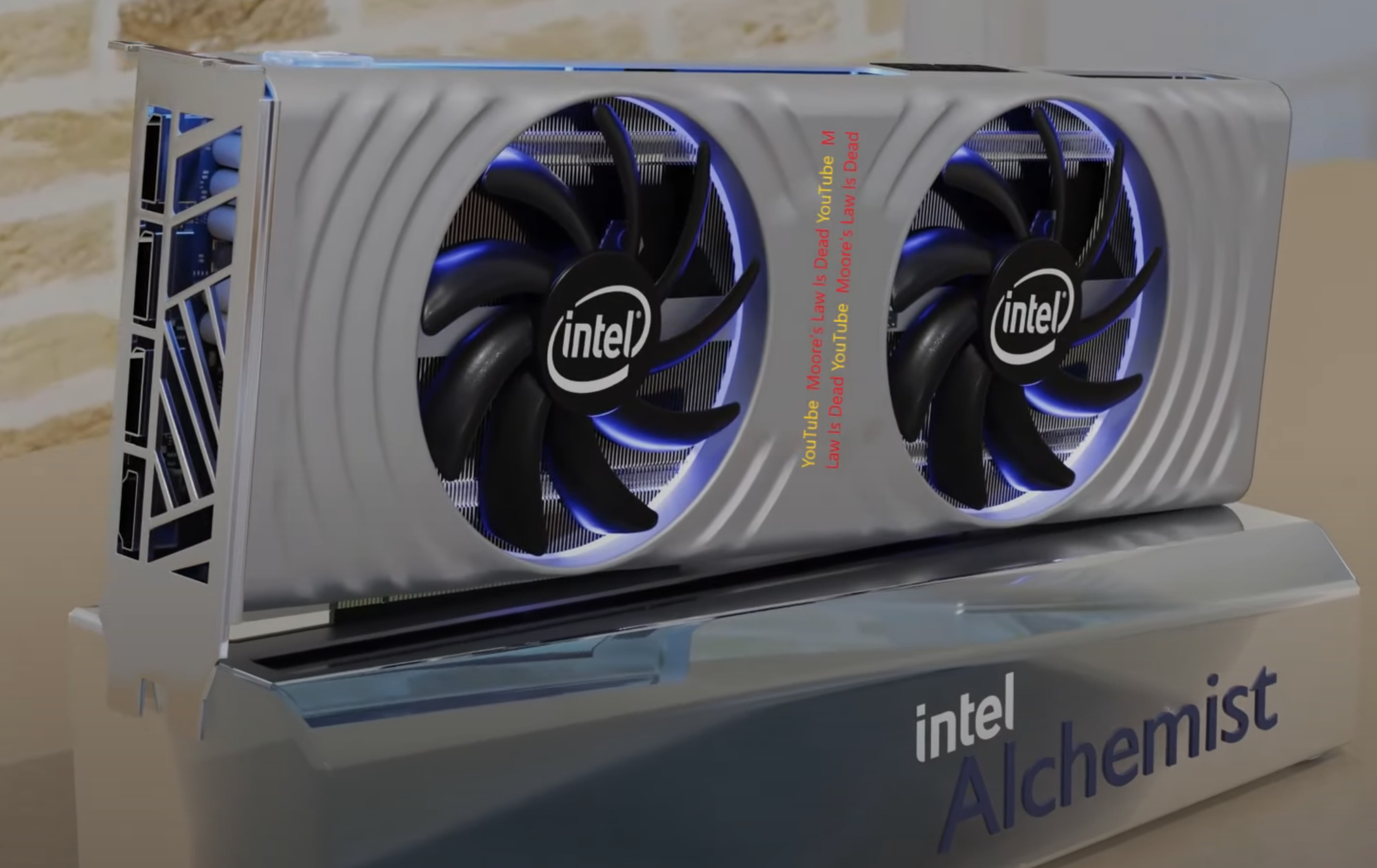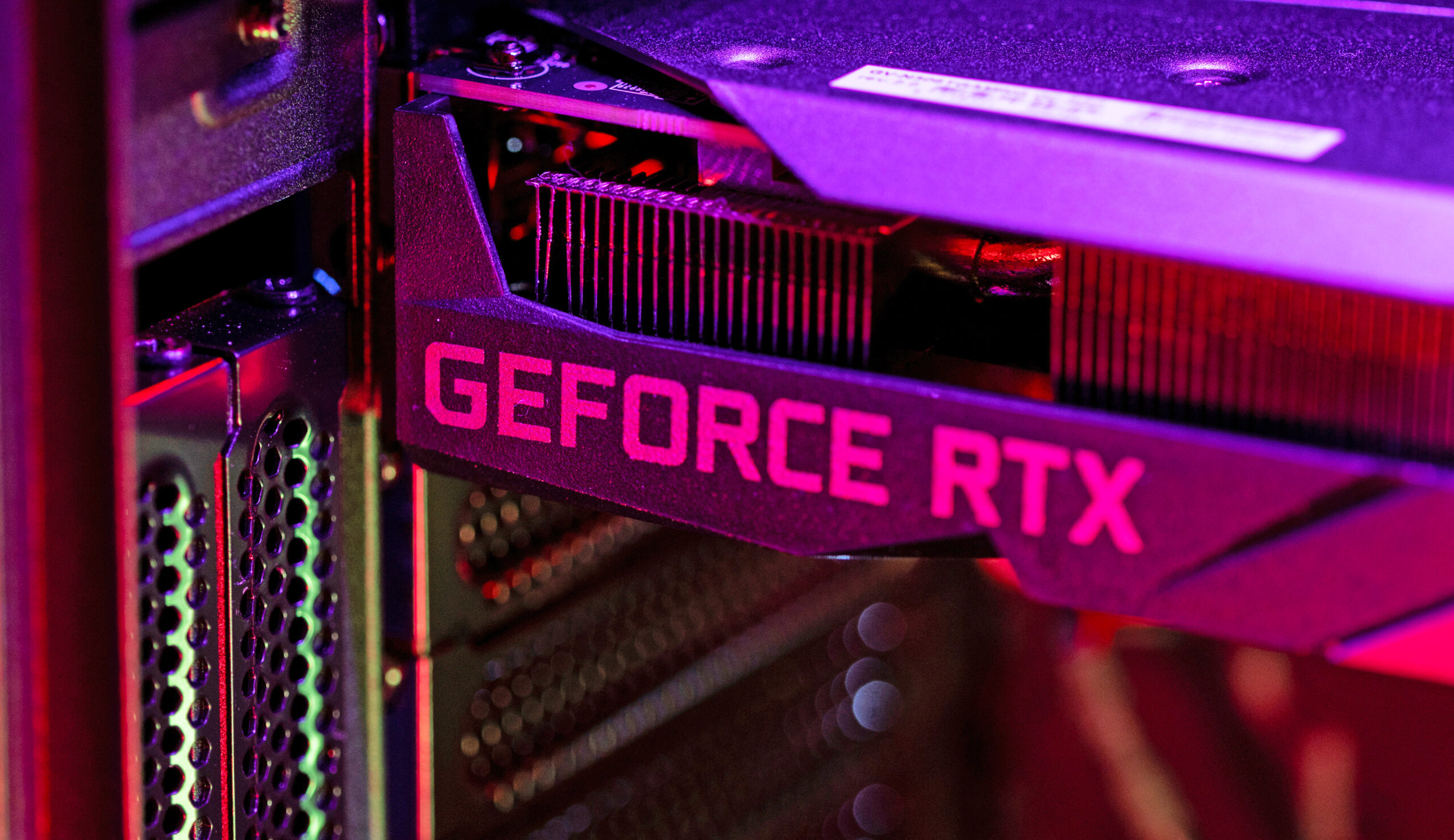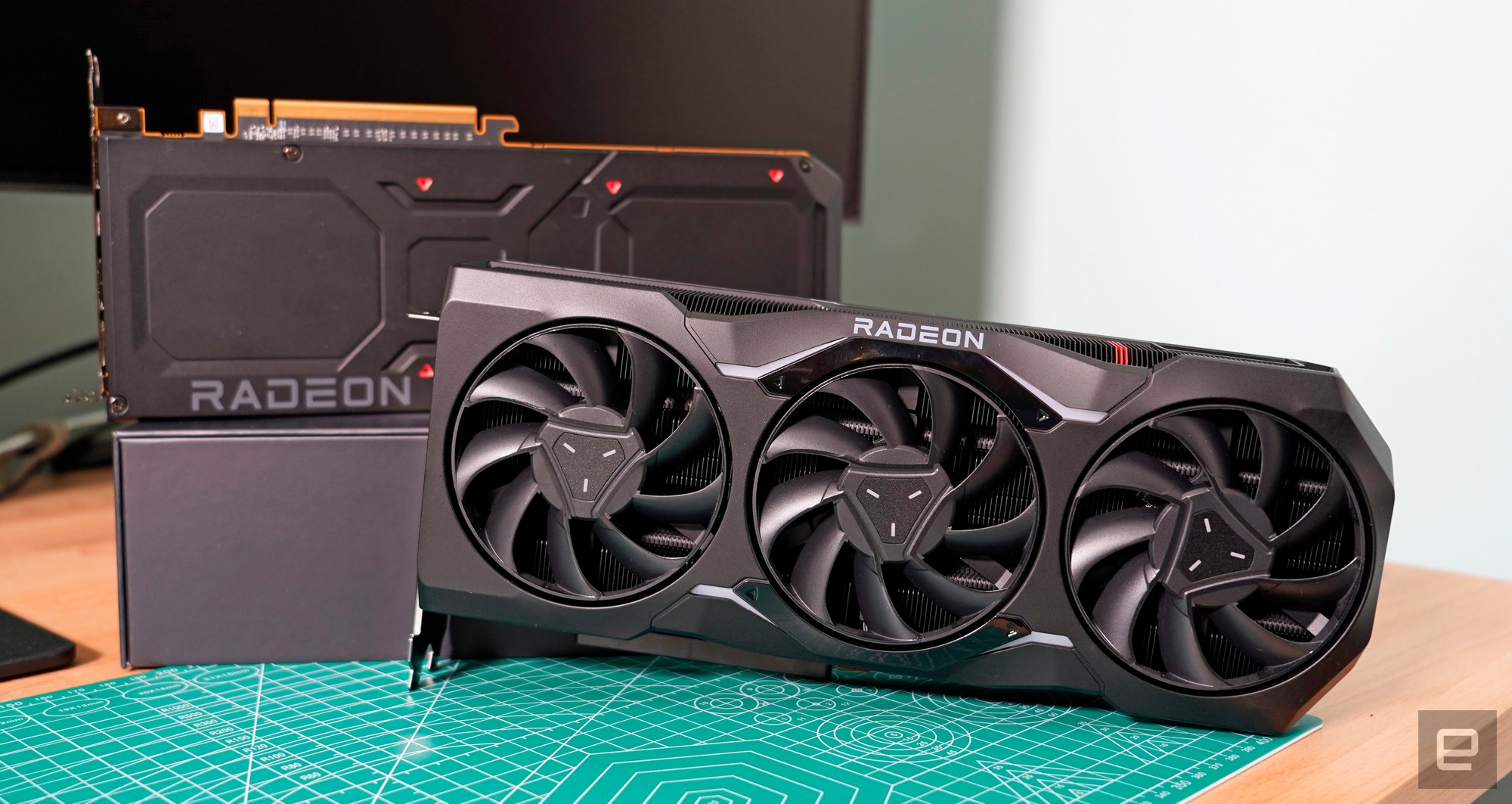
The primary renders of Intel’s ARC Alchemist reference graphics playing cards have been pictured within the newest leak by Moore’s Law is Dead. The renders present us what Intel’s personal reference design will appear to be & just a few tidbits concerning the launch of the desktop ARC lineup.
Intel’s ARC Alchemist Gaming Reference Graphics Playing cards Pictured In Newest Renders
The Intel ARC Alchemist graphics card reference design for high-end variants has been pictured on a number of events earlier than. We noticed a prototype leak out by MLID again in April 2023 & Intel confirmed the design in its ARC advertising marketing campaign in August. We additionally just lately got here to understand how Intel plans to model its upcoming gaming graphics card lineup, extra on that right here.
Moore’s Regulation is Useless determined to ask his good friend to render an animation of the reference graphics card based mostly on the knowledge he is aware of from his sources. The resultant render could be very detailed and sheds mild on nearly each facet of the reference graphics card, giving us an in depth take a look at what could be Intel’s first and really personal devoted design for its first desktop discrete gaming card.
Within the renders, we will see the cardboard relies on a high-end ARC Alchemist GPU, most likely the DG2-512 (Xe-HPG) chip which can energy the higher echelon of Alchemist graphics playing cards. The cardboard is available in a dual-slot and dual-fan design. Every fan incorporates a 9-blade fan design and there additionally appears to be RGB embedded across the followers giving a pleasant contact in blue. The cooler shroud has a round patterning across the edges which provides a singular contact to the cardboard. There’s additionally the ‘Intel’ brand on the facet accent plate that’s made out of acrylic and likewise embeds RGB LEDs. The cardboard rocks a big aluminum finned heatsink and MLID factors out the potential for a vapor chamber-based cooling resolution below the hood.
Intel ARC Alchemist Reference Gaming Graphics Card Renders (Picture Credit: MLID):
Apart from these, the cardboard rocks a backplate that extends past the PCB. There are massive vents on the backplate by which the second fan can vent air out. The cardboard receives energy by an 8+6 pin connector configuration whereas show outputs embrace a single HDMI and triple DP ports. Within the renders, we will solely see the outsides of the cardboard so we would have to attend for a PCB render for in a while. However regardless of that, Intel’s reference and 1st Gen ARC Alchemist design seems nice & credit score to MLID and his good friend for offering an early glimpse of the design, as soon as once more!
Intel Xe-HPG 512 EU ARC Alchemist Graphics Card
The highest Alchemist 512 EU variant has only one configuration listed up to now and that makes use of the total die with 4096 cores, 256-bit bus interface, and as much as 16 GB GDDR6 reminiscence that includes a 16 Gbps clock although 18 Gbps can’t be dominated out as per the rumor.
The Alchemist 512 EU chip is predicted to measure at round 396mm2 which makes it greater than the AMD RDNA 2 and NVIDIA Ampere choices. The Alchemist -512 GPU will come within the BGA-2660 package deal which measures 37.5mm x 43mm. NVIDIA’s Ampere GA104 measures 392mm2 which signifies that the flagship Alchemist chip is comparable in dimension whereas the Navi 22 GPU measures 336mm2 or round 60mm2 much less. This is not the ultimate die dimension of the chip however it needs to be very shut.
NVIDIA packs in tensor cores and far greater RT/FP32 cores in its chips whereas AMD RDNA 2 chips pack a single ray accelerator unit per CU and Infinity Cache. Intel may also have devoted {hardware} onboard its Alchemist GPUs for Raytracing & AI-assisted super-sampling tech.
The Xe-HPG Alchemist 512 EU chip is usually recommended to function clocks of round 2.2 – 2.5 GHz although we do not know if these are the typical clocks or the utmost increase clocks. Let’s assume that it is the max clock velocity and in that case, the cardboard would ship as much as 18.5 TFLOPs FP32 compute which is 40% greater than the RX 6700 XT however 9% decrease than the NVIDIA RTX 3070.

Anticipated efficiency and FLOPs of Intel’s ARC Alchemist high GPU die in comparison with RTX 3070 & RX 6700 XT. (Picture Supply: MLID)
In a speculative measure of efficiency, MLID states that the TFLOPs make no sense for comparability as efficiency scales in a different way respective to the structure, not the FLOPs efficiency. The gaming graphics card is just about anticipated to be quicker than the RX 6700 XT & RTX 3070 at this level however with work ongoing on the motive force suite, the efficiency is predicted to enhance additional.
Additionally, it’s said that Intel’s preliminary TDP goal was 225-250W however that is been upped to round 275W now. We will anticipate a 300W variant with twin 8-pin connectors too if Intel needs to push its clocks even additional. In both case, we will anticipate the ultimate mannequin to rock an 8+6 pin connector config. There’re additionally talks a couple of customized lineup being labored upon by Intel’s AIB companions. The primary Intel ARC merchandise are launching in Q1 2023.
Intel ARC Alchemist vs NVIDIA GA104 & AMD Navi 22 GPUs
| GPU Title | Alchemist DG-512 | NVIDIA GA104 | AMD Navi 22 |
|---|---|---|---|
| Structure | Xe-HPG | Ampere | RDNA 2 |
| Course of Node | TSMC 6nm | Samsung 8nm | TSMC 7nm |
| Flagship Product | ARC (TBA) | GeForce RTX 3070 Ti | Radeon RX 6700 XT |
| Raster Engine | 8 | 6 | 2 |
| FP32 Cores | 32 Xe Cores | 48 SM Models | 40 Compute Models |
| FP32 Models | 4096 | 6144 | 2560 |
| FP32 Compute | ~16 TFLOPs | 21.7 TFLOPs | 12.4 TFLOPs |
| TMUs | 256 | 192 | 160 |
| ROPs | 128 | 96 | 64 |
| RT Cores | 32 RT Models | 48 RT Cores (V2) | 40 RA Models |
| Tensor Cores | 512 XMX Cores | 192 Tensor Cores (V3) | N/A |
| Tensor Compute | ~131 TFLOPs FP16 ~262 TOPs INT8 | 87 TFLOPs FP16 174 TOPs INT8 | 25 TFLOPs FP16 50 TOPs INT8 |
| L2 Cache | TBA | 4 MB | 3 MB |
| Further Cache | 16 MB Good Cache? | N/A | 96 MB Infinity Cache |
| Reminiscence Bus | 256-bit | 256-bit | 192-bit |
| Reminiscence Capability | 16 GB GDDR6 | 8 GB GDDR6X | 16 GB GDDR6 |
| Launch | Q1 2023 | Q2 2023 | Q1 2023 |









